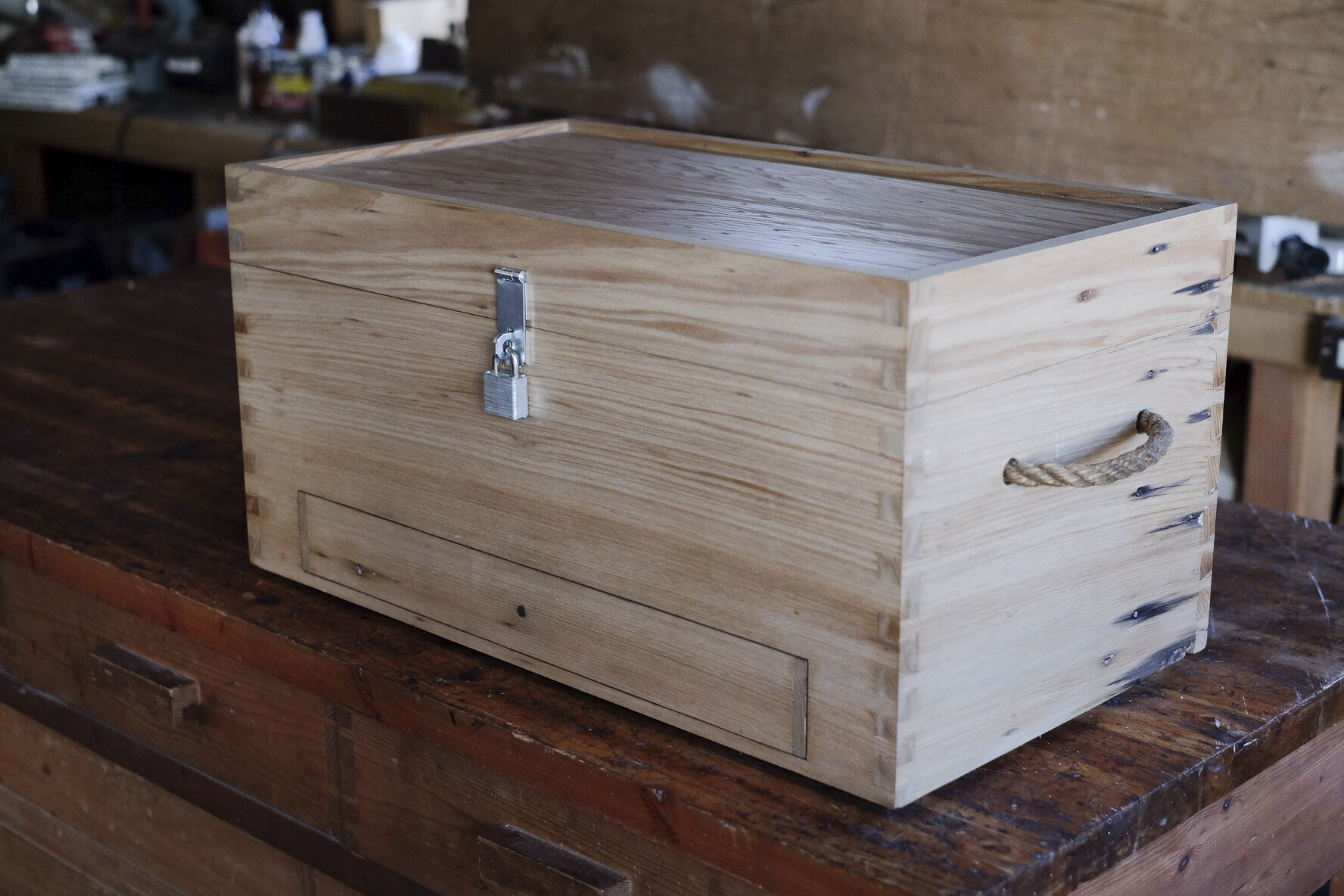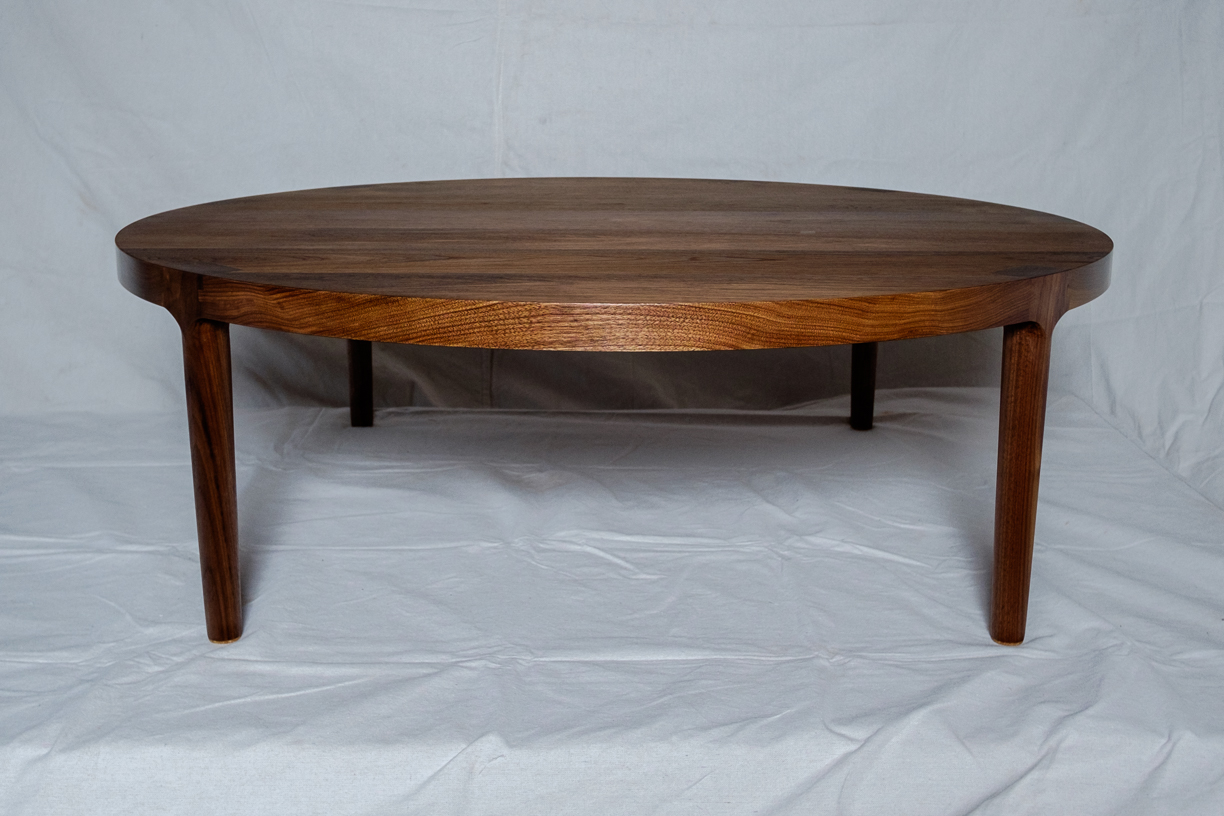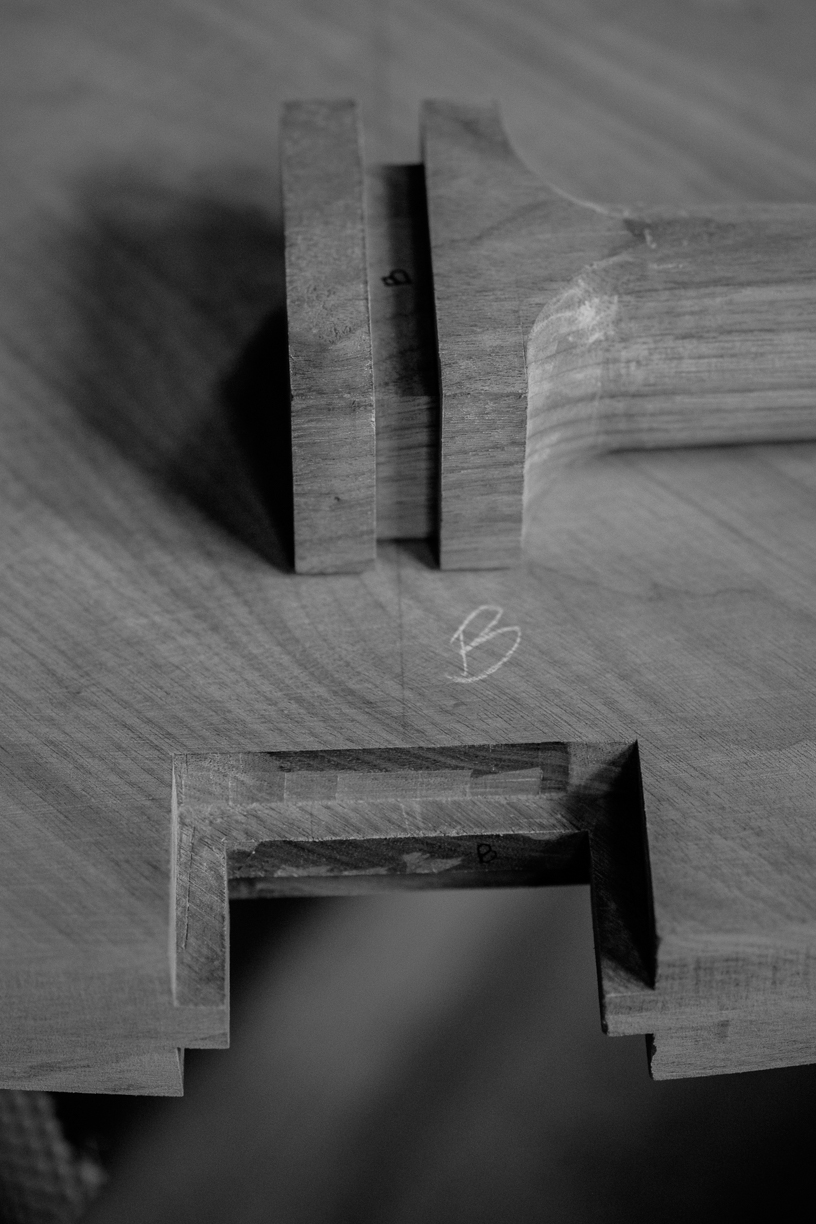That’s me with two very old boards in the photo above. They were once the side planks of my great-grandfather’s farm wagon. That’s him in the second photo (below). These planks provided the inspiration and material for a series of personal work that spanned several years and resulted in heirloom pieces for each member of my immediate family.
Great-Grandfather Burdge
The two aspects of my career that I love most are craftsmanship and story. The craftsmanship is obvious: it is highly rewarding to make things well. But story is where things get really good. At the end, that’s really all we have, right? Stories define our lives and our selves. They underpin culture, religion, and identity. We read them to children and we (hopefully) listen to those our elders tell. I am beginning to understand that the meaning and value of my work grows exponentially when it is connected to a larger story.
Before I was born those big planks somehow ended up in the eaves of my Great-Uncle Bobby’s barn. One day in the late 1990’s, he called and invited me to come see the old lumber he was sorting through. Uncle Bobby offered me these planks, telling me a story about my great-grandfather bolting them on the sides of his farm wagon for the potato harvest. They were each an inch thick, almost two feet wide, and over 10 feet long. I loaded my truck and drove away wondering what I could ever come up with that would do justice to their age, size, and family connection. I forget the actual number of growth rings, but between their life as a tree and their time as lumber, those boards had been on this earth for well over 200 years!
My toolbox today.
At that point in my career, I was in a phase of making and rejecting toolboxes. The goal was the perfect toolbox to carry my essential, everyday tools onto job sites. Not too small, not too big, not too complicated. Like a good briefcase is to a lawyer. After 5 attempts I had a version that was pretty good. But I still had some changes in mind. I took a deep breath, and cut a piece of the farm wagon planks to make the toolbox I’d been dreaming up. It was the result of over 6 years of experience, thought, and experimentation. It was made from a physical piece of my family heritage, and joined with hand cut dovetails. For me, it was pretty close to perfect. I loved it, and I’m still using it to this day.
I incorporated a lift-out tray into this toolbox. (I think I used a 2x6 to make the tray.)
Years later a project came up that called out for the long, wide farm wagon planks: my parents had been dreaming about a farmhouse style dining table. It was close to Thanksgiving, and I had down time in my schedule. I kept the design simple and clean to highlight the exceptional width and character of the boards, using breadboard ends to keep the top flat and add some detail.
Mom + Dad’s table
I made the base from some 3” thick quarter sawn douglas fir that I happened to have, and cut intersecting through-tenons for a little flourish. Everyone loved the new table made from the old boards, and to this day it is the gathering place in my parent’s home.
Corner details
Fitting the breadboard ends
All was well: I’d made a beautiful table for my folks, and a toolbox for myself that I loved. There were even few cutoffs left from the original boards that I squirreled away in my stash and forgot about.
Years passed.
Last summer, one of my best friends (who is an exceptional furniture maker) sent me photos of a tool chest he was making in an effort to simplify his work process. The design was based on an old Austrian tool chest that Frank Klausz has long championed. It is sized to hold the essential tools a cabinetmaker uses every day, and no more. (Picking the tools is as big a challenge as making the chest!) I’d been in a creative slump for some time and my friend challenged me to build one to get myself out of the doldrums. I dug around and found just enough leftover wood from the farm wagon planks to make the chest. (I even made the handles from an old length of rope that I got from my Uncle Bobby!)
Klausz style tool chest
Tool chest open
I love this wild book match in the lid
I love how the tool chest turned out, and It’s great to work out of. And I used every last scrap of those old farm wagon planks to finish it. It was a good ending to the story.
All was well, and time passed. (But just a little bit.)
While still working my way out of my creative rut this past winter, I decided to build myself a new workbench. Digging through my lumber stash, I discovered a couple offcuts from the farm wagon planks that I had completely forgotten about! Before I had even finished the workbench, I knew what my first project on it would be: there was just enough wood from the old farm wagon planks to build another shoulder toolbox for my younger brother (who is a carpenter) and a small chest for my older brother (who is an amateur machinist.) I built those two boxes with plenty of dovetails and surprised my two brothers with their own piece of our great-grandfathers farm wagon planks.
The new and the old meet. How’s that for a patina, eh?
Tool box and lift-out tray
And a small treasure chest for my older brother
Lots of lift out trays in this little guy
It’s hard to believe that I’ve created a life where this kind of work happens. I still remember being in awe as an apprentice of what the craftsmen around me could figure out and make. I yearned to be able to do that myself. My career in woodworking has brought me an amazing kind of luxury: I’ve spent my entire adult life seeking quality, and practicing a craft that I love. More than once I’ve been able to build something that is maybe not perfect, but beautiful and useful. It is a humbling realization that through this body of work, I can tell a story that traces a line from my great-grandfather, through my dear great-uncle, and spreads and grows through each member of my immediate family. I never met my great-grandfather, and my Uncle Bobby passed on before all this, but I think they would both approve of what became of those old farm wagon planks.
New tool chest and old shoulder box








































































